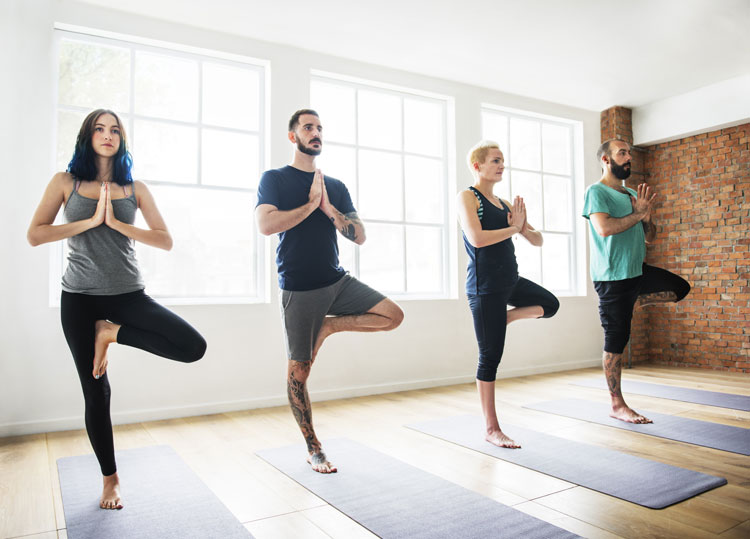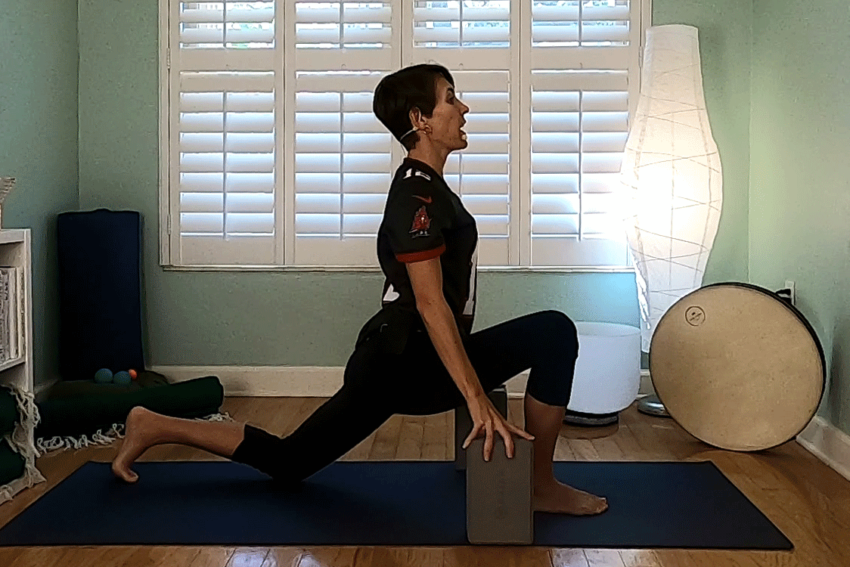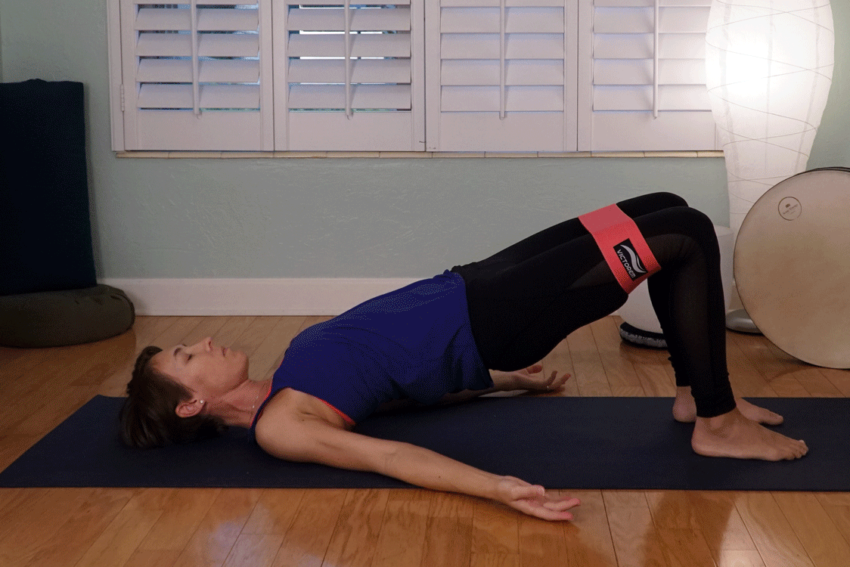Mastery as a golfer is established through a commitment to ongoing learning and excellence in the sport. Yet there is often no predetermined course outline or education curriculum to gain golf mastery. Instead, you have to create a schedule on your own. This blog will give you the essential steps to do so. The end result? You’ll sharpen your skills, have more opportunities to progress, and set yourself up for more success on the golf course.
Ever since I was young, I loved to read. In fact, I’d often hunker down in the classroom during recess in order to finish the latest edition of the Magic School Bus. Learning gave me access to new places and ideas. It sparked my imagination and creativity.
That’s probably why I read one book each week last year and will reach the same target again by the end of this one.
Thanks to the internet, you can amp up your yoga and golf knowledge via many sources other than books alone. And you can learn from the best without leaving the comfort of your own home or community.
The flipside of that coin is that the selection of resources from which to learn can be overwhelming. And, with so many other responsibilities on your plate right now, it can be exhausting to think of adding one more thing to your to-do list.
The last thing I want to do is have ongoing learning add more pressure to your life. Instead, my goal is to inspire you to find more freedom that comes from establishing a learning structure. I’d like you to consistently seek fresh perspectives that will add excitement to your golf game–not take away from the time and energy you already use to play.
Not quite sure what I mean by all of this?
Keep reading, and discover just how adding small elements of ongoing learning about yoga and golf can be a powerful catalyst to the golf mastery you seek.

WHAT IS MASTERY?
Mastery is often misunderstood. It’s viewed as perfectionism–in which you need to get everything right. Or, it gets associated with a single, one-time accomplishment.
Instead, mastery is a dedication to the pursuit of excellence in a particular field. As a golfer, mastery then means you are committed to refining and improving your game.
Mastery also means that you have the basic skills necessary to play the sport. And when you can do so well, your capacity for success on the course is limitless.
Said another way, when you operate from a place of golf mastery, you:
- Sharpen your skills
- Have more opportunities to excel on the course
- Wake up excited to play each day
- Appreciate the the game of golf from new vantage points, and
- Experience more freedom and excitement in your physical health
How do you attain such mastery?
I use a very simple formula:
This article explores how to create an ongoing learning plan to get you started. Then, in the following two weeks, you’ll discover good habits to cultivate for success and the best ways to deliberately practice those habits for heightened golf performance over time.

MASTERY STARTS WITH LEARNING
Ongoing learning is the first ingredient of mastery. This is because every time you gain a fresh perspective or engage in a novel experience, your senses leave a biological impression on your brain. Your brain cells–or neurons–establish different patterns as a result. And these neurons start to fire in new sequences.
Essentially, learning gives your brain an upgrade.
You produce new states of mind that become recorded in the brain. These internal shifts then affect the way you think and behave. And these new neural networks can even elevate the way you play golf.
This change for the better starts with what you decide to learn, and how often you put that learning into practice.

ELEMENTS OF AN ONGOING LEARNING PLAN
In order to get a college degree, you must complete a distinct curriculum based on your field of study.. Similarly, many short term events also provide a structure for the learning you will receive with them. This is true in our Flexible Golfer Program.
But what happens when you’re on your own? How do you decide what to learn and when?
Here are the elements to consider as you customize your learning curriculum. Simply follow any one of these recommendations to increase the likelihood you’ll stick with the program. Then, in the next step, you can create the time-frame in which to complete your studies.
Grow Roots
If you want to attain golf mastery, or get closer to it, you want to have a solid understanding of golf basics. Thus it’s always beneficial to discover more about the game, the rules, and the golf swing techniques. And since the game is always evolving, you can enhance your knowledge by studying the thoughts and patterns of yoga leaders today.
In addition to golf basics, you also want to build a strong understanding of yoga, too. This is especially true if you’re using yoga as a cross-training tool to stay golf-ready all year long.
Follow your Inspiration
When you enjoy what you are learning, you’re far more likely to stick with your commitment. So ask yourself the following questions before selecting a program, teacher, or workshop:
- What themes do I notice in your golf game?
- What recurring issues do you have in your body?
- Which aspects of golf or yoga interest me? (like chipping or yoga for core strength)
- Which aspects of yoga or golf do I want to learn more about? (like balance or best courses in the United States)
- What outcomes would I like to see from my game? (like shooting a PR this season)
Then, once you have answers to these questions, seek out the best way to deepen your knowledge in those areas.
Align with your Learning Style
You have a unique personality and way of internalizing new information. Instead of fighting your natural talents, go with them. Decide how you best like to learn. Is it in person? Online? Do you prefer to experience new things in a group setting? Or would you rather do so in a one-on-one format?
Once you have clarity about your learning preferences, you can allow your natural talents to shine in the process.
Take your Time
Ongoing learning takes time. Instead of expecting to master everything at once, simply focus on getting 1% better at a time! The learning schedule you set below will also help you find a pace that suits your current budget and time constraints.

SET A LEARNING SCHEDULE
Mastery is defined by the question, “How will I get there?” This means that it’s essential for you to create a game plan for your ongoing learning. It’s up to you to decide what to learn, and when to learn it. Plus, you’ll want to set up a schedule in a way that is in harmony with your existing responsibilities.
Learn Each Week
This is the most frequent time frame in the ongoing learning process, so you want the content to be easily absorbed in small chunks. For me, this looks like reading a few chapters in a golf book, taking a new yoga class, or taking some time to practice on the range each week. Ideally, you want this type of learning to give you an energetic boost. Think bite-sized learning to stay inspired!
Step more toward Golf Mastery each Month
If you want to learn something new each month, you’ll have a bit more time and energy to dedicate to this task. Perhaps you participate in a 2-hour workshop held on one weekend of the month. You could view a more lengthy video tutorial or even finish the book you started a few weeks back.
This is where Swagtail’s Virtual Yoga Studio is a great fit for your monthly learning regimen. We have a 1-hour live masterclass each month on numerous yoga-related topics. This sparks your thinking in new ways and gives you plenty of time to integrate the new information. Plus the recorded Q&A’s and worksheets provided will further refine your own progress.
Quarterly Goals
If you set a quarterly learning goal, you have three months in which to complete this item on your checklist. This means you also have more time to save for the event if you want to participate in an intensive golf or yoga training.
Make Learning Strides each Year
This is the longest time frame for you to consider when planning your continuing education. Think of the goals you want to accomplish with your health, focus, and golf game. Then, decide what one thing you could do each year to keep you on track to reach those goals.
I like to do a week-long yoga retreat once a year. Sometimes this means I attend a retreat solely as a student, and really just refill my energy tank. Other times, I plan a special golf trip for Steve and I to play a course on my bucket list. There are years I do both.
To do this, I PULL OUT MY CALENDAR for the upcoming year and see where I have gaps in my schedule. Then, I look at the events held by my favorite teachers or times I get away with those I love. When I find a match, I book it immediately. This gives me something to look forward to for the months and weeks beforehand!
IS NEW LEARNING ENOUGH?
Neuroplasticity is your natural ability to change how the brain’s neurons are connected. This can change at any age, and it’s done through the way in which you focus your attention.
Unfortunately, these new neural networks in the brain are not like a college degree–where once completed, it’s yours forevermore.
Instead, the same ability for your brain cells to change for the better also means they can shift again in the opposite direction of your desires. Studies show that if you don’t actively internalize, or repeat, your new neural connections, they can break apart in as quickly as 48-hours.
This is exactly why ongoing learning is just one of the three ingredients to achieve mastery. Next week we’ll talk about using good habits to improve your golf game. In that post, you’ll discover how to take those neural networks and transform them into automatic programs that will stick around for months and years to come.
PUTTING IT TOGETHER
If you want to elevate your game as a golfer, you need a technical skill set to match your lofty ambitions. Attaining such mastery is a step-by-step process in which you’re dedicated to excellence. This starts with a commitment to ongoing learning in the realm of golf. And since you’re also learning about yoga as a training tool for greater success on the course, it helps to keep learning about it, too. Just remember to use the simple steps above to create a customized plan of study. Then, enjoy the greater satisfaction and clarity that comes with building good habits as a golfer.
Take Action Now:
- Download our PDF to set your own learning schedule.
- Set up your next learning event for this week!
- Enjoy the beginner’s mind that comes with being a student again!





